Text: Anthony Bay
Photo: Bogdan Croitoru and Shutterstock
Text first published in ATLANTIC TOUR brochure 2011
Over the past ten years I have travelled regularly to Bucovina and, from the very first visit, have been captivated by its physical beauty and by the charm of its way of life. So captivated in fact that I have to admit to feeling homesick for the region when I am not there, yearning to return to its rolling countryside, its villages and monasteries, and to its charming and hospitable people.
There are few places today in Europe that retain the rural simplicity of Bucovina, coupled with a countryside of almost mystical beauty. Here the land is still routinely worked by hand and by horse, wooden carts laden down with the produce of the fields rumbling along quiet lanes to quaint villages. Old traditions continue to play an important role in the daily cycle of life, maintaining a link with the past that is alive and relevant to the modern day. I remember arriving at a small village the day they were having a festival and being enthusiastically invited to join in the festivities : all the villagers were out for the occasion, and the children, dressed in traditional costumes, danced in the lanes down to the 15th cent church where the grandmothers had gathered to solemnly sing religious chants. The major made a rousing speech before we walked back, flanked by the men of the village riding on their steeds, to enjoy a seemingly endless luncheon of country dishes washed down by homemade wine and firewater brandy.
As you drive through the countryside – cars and tour buses are still rare –the beauty of the landscape cannot but impress. The low-lying Carpathian mountains are swathed in forests of fir and beech (from which the word Bucovina is supposedly derived) and roll across the land affording a green backdrop to the villages and fields. Because the land is cultivated by hand and by horse it’s often difficult to tell between those fields being worked and those laid to rest, for the austere imprint of agri-business, with lanes of mechanically ploughed soil and hedgerows clipped starkly into serried rows, does not exist here. And from that land comes the produce which you enjoy at meals, for most of what you eat in the local hostelries of the region will have been reared or cultivated within a short distance of your table.
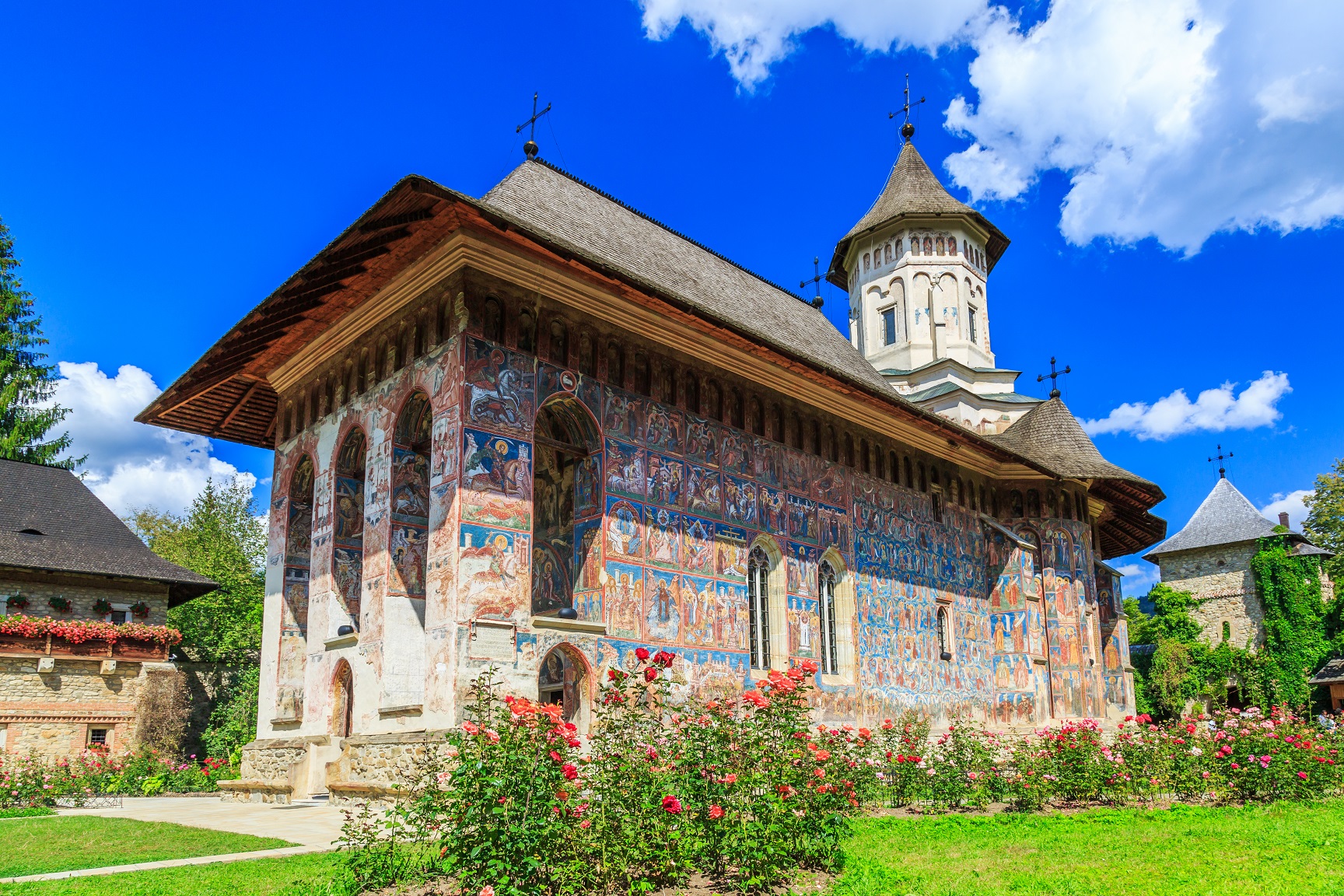

Nestled in this countryside are Bucovina’s four great monasteries : Humor, Voronet, Sucevita and Moldovita, sheltered to a certain extent from the outside world by the mountainous countryside. Mainly built in the 15th and 16th cent they are steeped in history and are rightfully acclaimed as masterpieces of art and architecture. The outer walls of the monasteries’ churches are entirely covered in fresco paintings of biblical events and apocrypha telling the story of the triumph of Christianity.
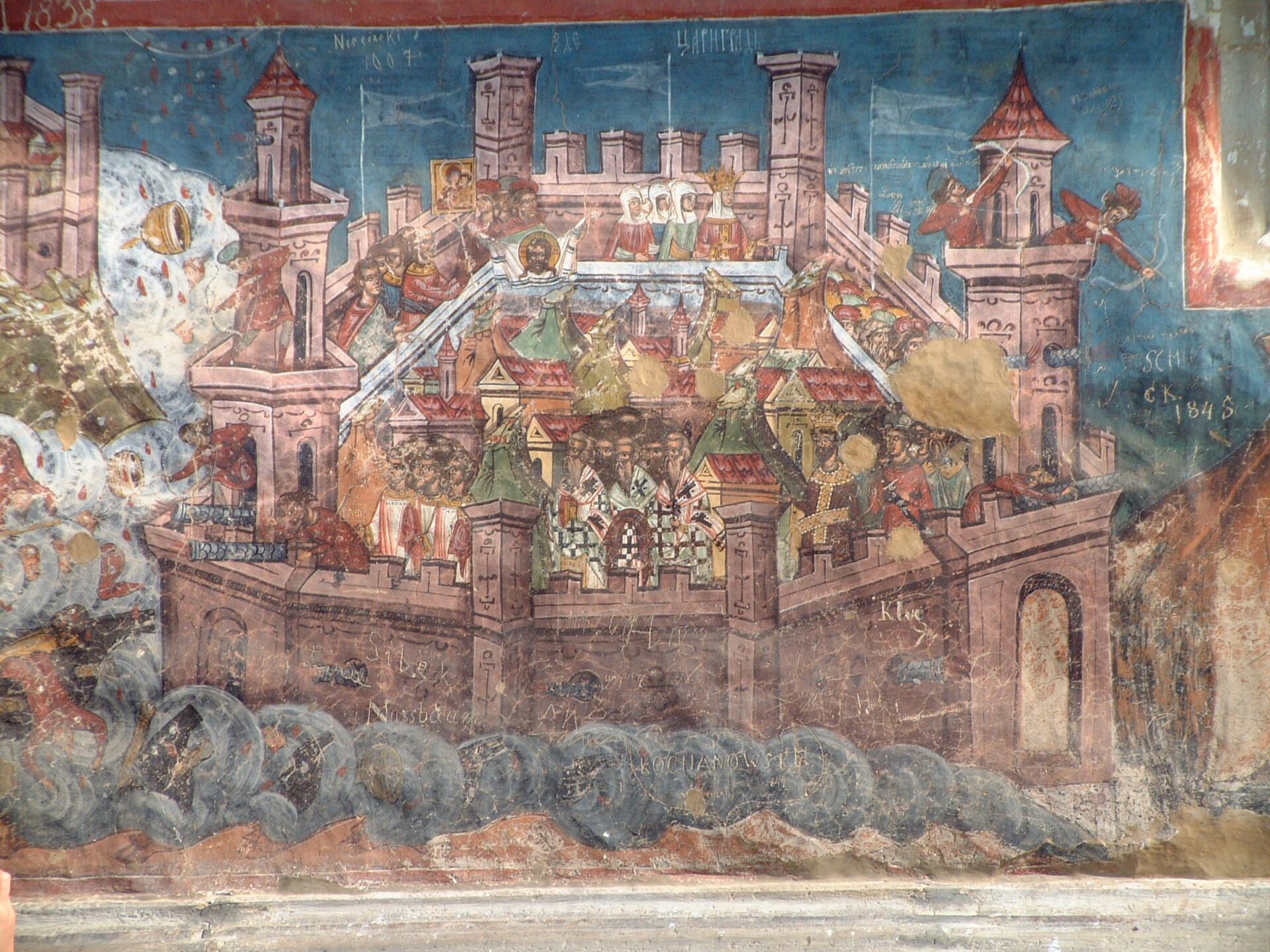
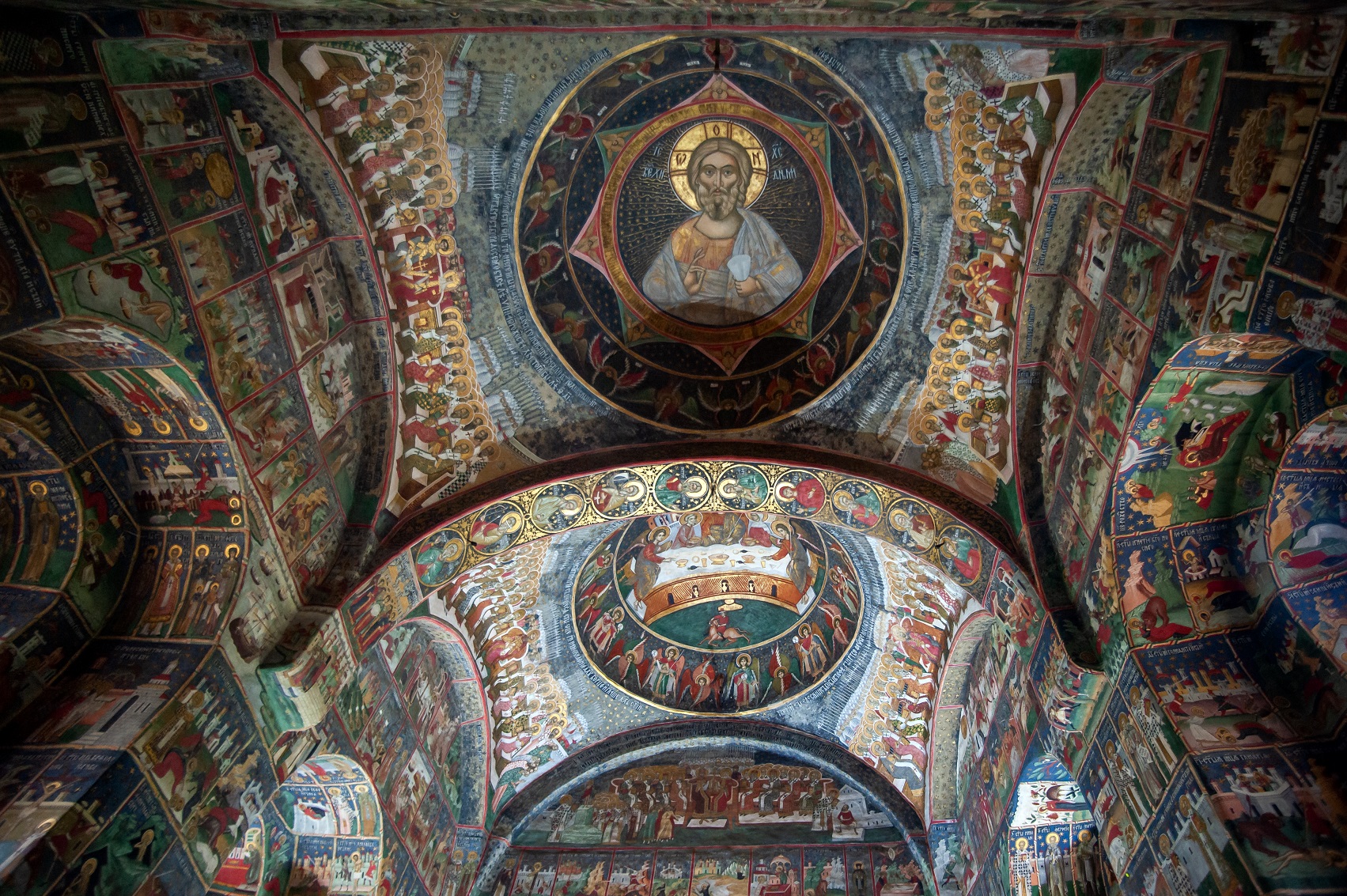
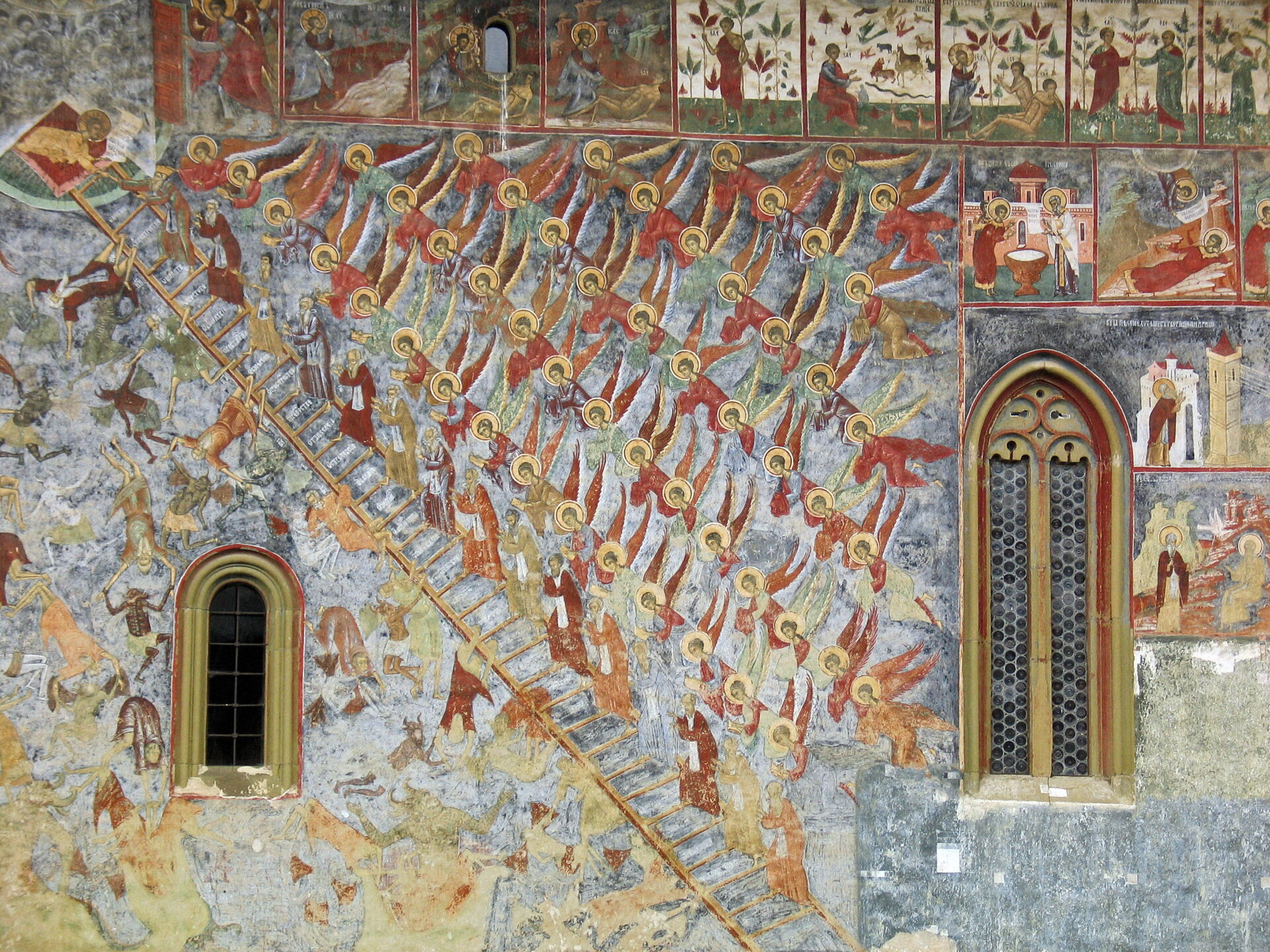
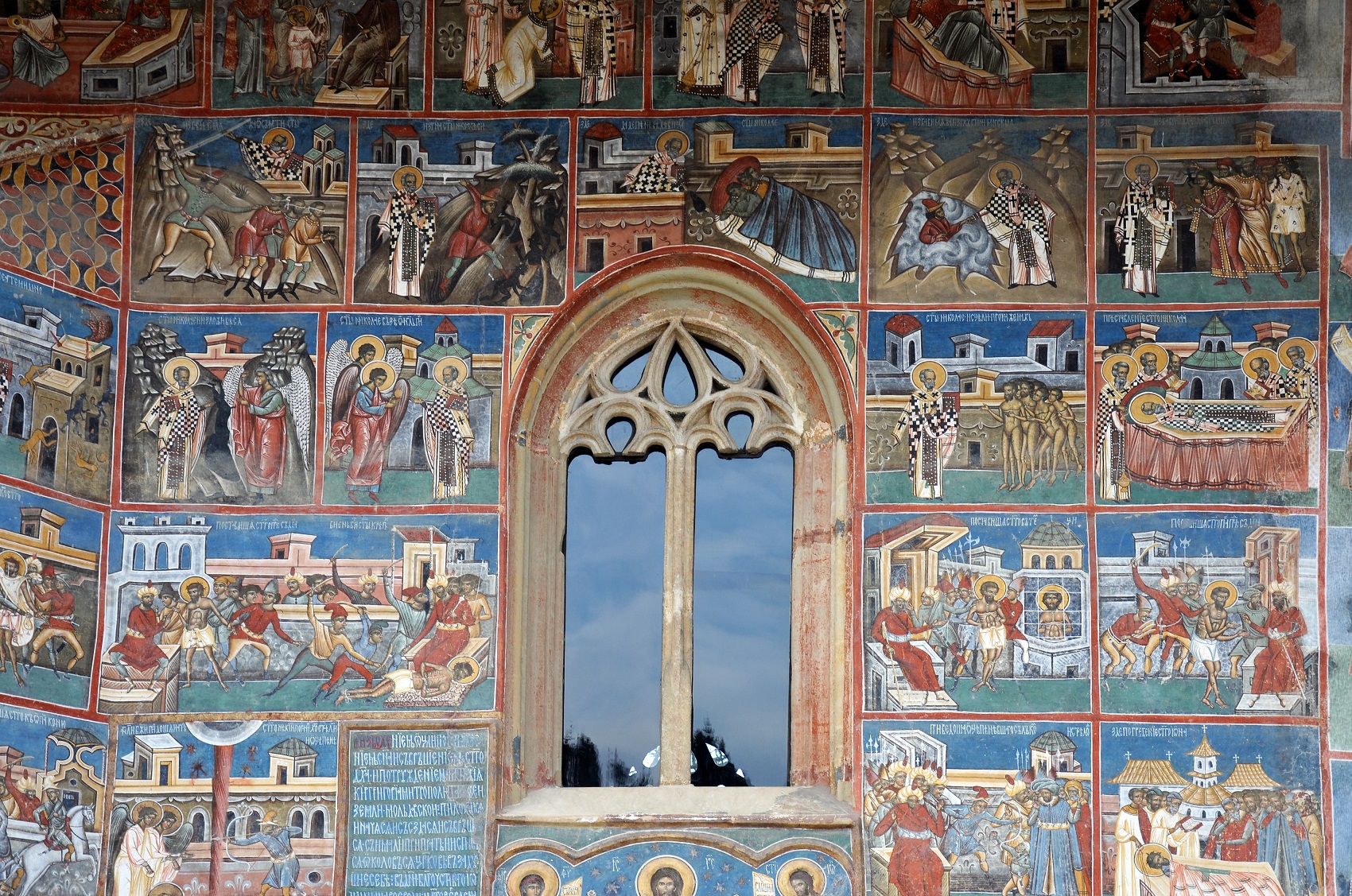
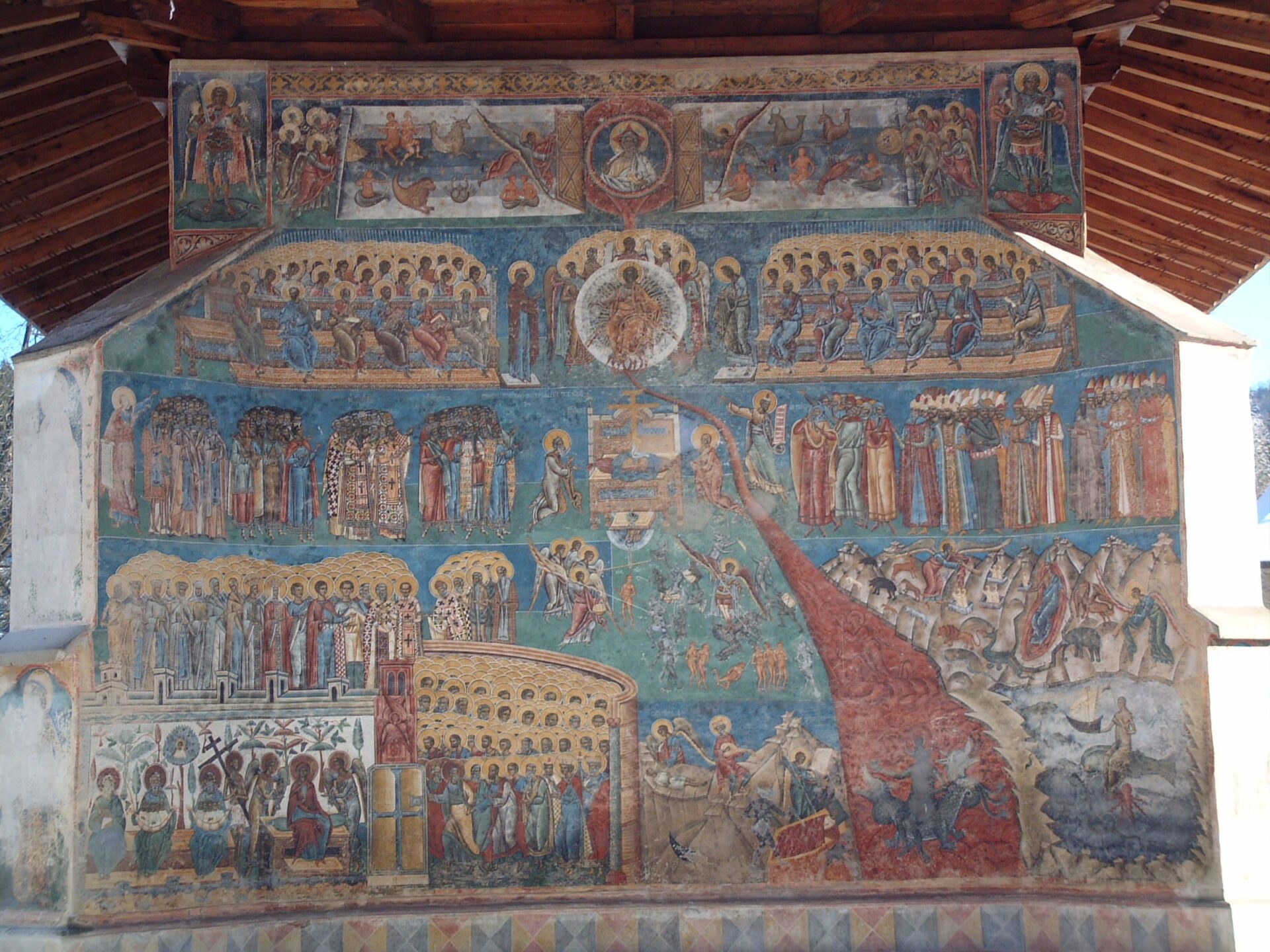
It’s almost impossible to describe the impact of these wall paintings when you first see them. The richness and intensity of colour and form so fervently daubed across the entire building’s exterior surface is almost hallucinatory. You are obliged to stop for a moment so as to absorb what at first looks like an incomprehensible, swirling cornucopia of extravagance. But slowly, as your eyes start to decipher the contorted images and vibrant colours, you realize that the entire story of Christianity is being depicted in a fervent attempt to capture the essence of heaven and hell in all their glory and fury. As your mind adapts to the images, what seemed at first like visual anarchy becomes a picture book of religious stories executed with an extreme intensity of emotion and passion. Entering the interior of the churches, the scenes become less vibrant and more sonorous as Church elders, saints and patrons assert the justification of Christianity to be the spiritual guardian of believers, and the judge of sinners.
If you are looking for a region that offers “hidden Europe” at its most tantalizing then I heartily recommend a journey of discovery to Bucovina.
About the author:
Anthony Bay is a freelance Tour Operator and travel consultant, and also accompanies private individuals and small groups through Europe as a Tour Director. For many years he worked for prestigious travel company Abercrombie & Kent in their Europe office, designing and developing top of the range products in virtually every country on the Continent. It was during this time that he made the first of numerous visits to Romania, nurturing a deep love for the country that he retains today.
Anthony lives in the South of France with his family.